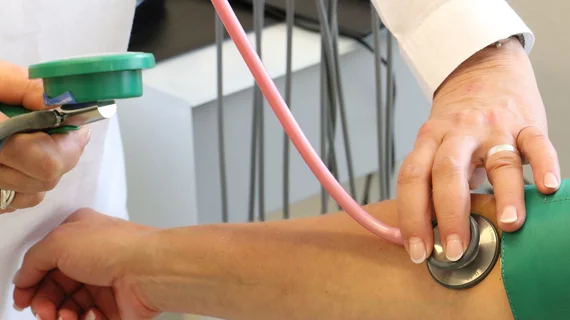Hospitals seeing more patients with uncontrolled blood pressure
Hospitalizations involving patients in a hypertensive crisis more than doubled from 2002 to 2014, according to a new study published in the Journal of the American Heart Association.
The upward trend in the condition occurred even though there have been improvements in hypertension control and a reduction in some CV events in recent years.
Using data from the National Inpatient Sample database, researchers found that there were 918,392 hospitalizations and 4,377 in-hospital deaths related to hypertensive crisis from 2002 to 2014 in the United States. Among men, these hospitalizations accounted for 0.17% of all admissions in 2002 and 0.39% of all admissions in 2014. Among women, hypertensive crisis was tied to 0.16% of all hospitalizations in 2002 and 0.34% in 2014.
Though the number of hospitalizations increased slightly more among men, the study's authors noted that mortality rates were similar between men and women.
What caused this consistent increase in hospitalizations for hypertensive crisis? Some patients may be unable to afford drugs to control their hypertension, the authors suggested, and diet, inactivity, and unhealthy lifestyle choices could also be responsible.
“Although more people have been able to manage their blood pressure over the last few years, we’re not seeing this improvement translate into fewer hospitalizations for hypertensive crisis,” lead author Joseph E. Ebinger, MD, a clinical cardiologist and director of clinical analytics at the Smidt Heart Institute in Los Angeles, said a prepared statement. “We need more research to understand why this is happening and how clinicians can help patients stay out of the hospital.”
“These findings raise the question: Are there sex-specific biologic mechanisms that place women at greater risk for dying during a hypertensive crisis?” added senior author Susan Cheng, MD, director of the Institute of Research on Healthy Aging in the department of cardiology at the Smidt Heart Institute. “By understanding these processes, we could prevent more deaths among women."
Read the full study here.
